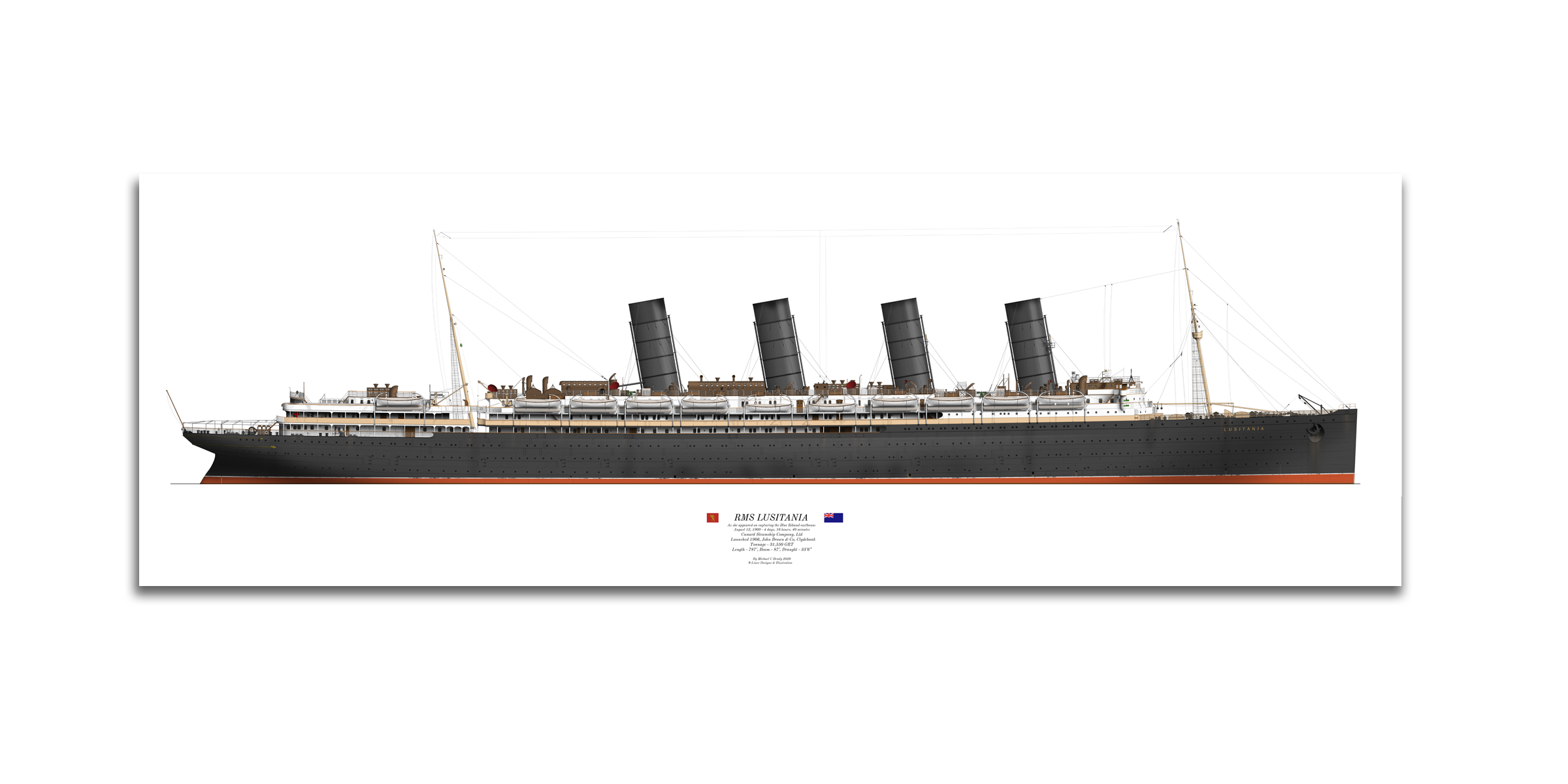RMS LUSITANIA
As Lusitania appeared on her final crossing, 1915
By Michael C Brady
‘avenge the lusitania’
The outbreak of war was calamitous to the transatlantic trade but Lusitania continued to operate as a passenger liner relying on her great speed for safety. Her good fortune finally ran out on May 7, 1915 off Kinsale, Ireland when a torpedo - fired by German submarine U-20 - struck her on the starboard bow. The impact was a death-blow; within 20 minutes the great Cunarder was gone along with 1,198 lives.
The exact circumstances leading Lusitania to meet her fate is almost unbelievable, as by extreme coincidence Captain William T Turner brought the great liner to a near-standstill to take a navigational reading at an almost perfect firing angle to submarine U-20.
Lusitania’s transverse bulkheads resulted in uneven flooding and a serious starboard list. Her clunky radial davits were rendered useless by the sharp angle and collapsible boats required assembly before launch. Today, Lusitania’s wreck is a jumbled mess thanks to Royal Navy depth charging and strong currents, a stark contrast to the liners’ original beauty.
explore the drawing
“I completed this drawing in 2020 after having been fascinated with Lusitania’s story for a long time. It turns out I wasn’t the only one; since I started Oceanliner Designs in 2018 many people have been asking for her! This livery with the dark funnels is severe but illustrates what she would have looked like in departing New York for that final, fateful voyage.”
- Michael C Brady
Lusitania’s elegant prow had a straighter rake than other liners which impacted her sea-going characteristics. Her antifoul below the waterline is considerably faded here thanks to long-term immersion in seawater.
Forward at the bridge. Struts can be seen in place at the promenade deck breakwater, perhaps a souvenir of Lusitania’s run-in with a rogue wave in 1910 that damaged her bow and bridge.
Lusitania’s funnels were painted out dark grey to mask her identity somewhat - although her name was not removed from her bow or stern.
At the Second Class promenade aft, extra collapsible and clinker boats were stored for use in an emergency. Only 6 lifeboats were successfully launched on the day Lusitania was torpedoed; all from the starboard side.
FEATURED lusitania PRODUCTS
explore other lusitania drawings






















